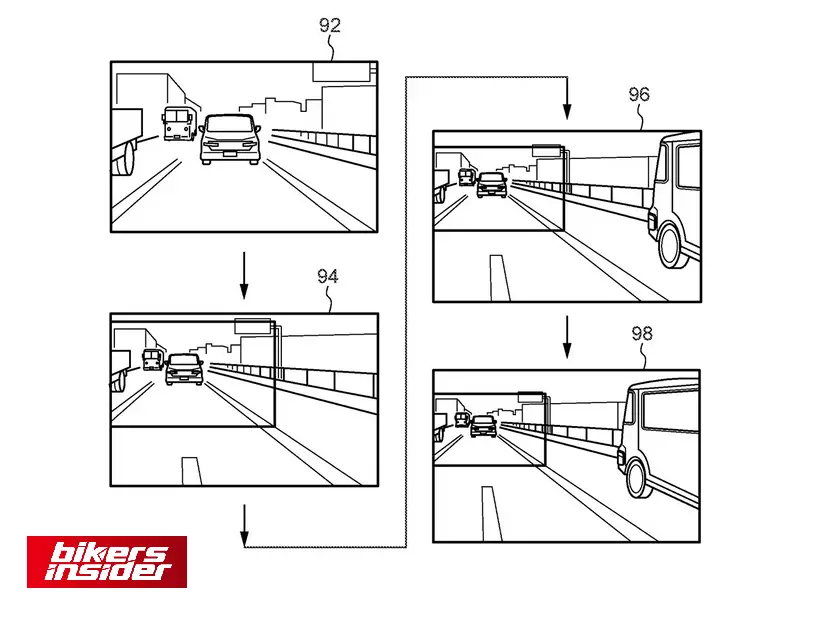Though using a rearview camera instead of mirrors has been a common feature of concept motorcycles for at least a few years, the technology remains distinctive even now that such gear is less expensive and more widely available than it was years ago. Suzuki may be able to change this after collaborating with electronics expert Tokai Rika to develop a motorcycle-specific rear-camera system.
This time, its purpose is to provide supplementary safety gadgets that provide at-a-glance clarity on what’s in your blind spot rather than a direct substitute for standard mirrors, at least initially. Whether it’s directly behind you or over your shoulder, the emphasis is on making the relevant piece of the image immediately clear.
Cameras instead of mirrors?
Although abandoning mirrors entirely—as is increasingly happening with electric automobiles in the pursuit of ever-lower drag—there are still legislative hurdles to overcome in most parts of the world. Even the greatest cameras have limitations compared to a basic mirror and the human eye. There could be aerodynamic and stylistic advantages as well. Not least, a camera displays a set image of the region it is focused on. In contrast, a mirror allows you to enlarge or modify your field of view by tilting your head.
The Suzuki system aims to handle this. Its single, wide-angle camera in the tail lets it get a wide view of what’s happening behind the bike. As a result, the standard TFT instrument panel ahead of the rider provides far too much information. We’re all told that “objects in a mirror are closer than they appear.” With a wide-angle camera, the problem is exacerbated because other vehicles appear very little even when they are fairly close, making the picture difficult for our minds to interpret and, as a result, difficult to detect cars that may be quite nearby yet only fill a small area of the screen.
Suzuki’s patent for rearview camera
According to the Suzuki patent, depending on what you’re doing, the image on the screen should only show the relevant portion of the image generated by the camera. According to the patent, using bar-mounted buttons, a crop option allows users to switch between wide-angle and zoomed-in views. In the latter case, when you are driving in a straight line, the screen may show a zoomed-in view of the road directly behind you, giving you a clear indication of how close a following vehicle is; however, when you hit the turn signal, it will show the blind spot over the appropriate shoulder to facilitate lane changes.

The patent suggests that the image on the device could be magnified in stages or smoothly, with the latter providing the rider with a finer understanding of exactly which part of the road behind him is visible and that it could automatically revert to a straight-ahead or wide-angle view after a set duration. It would also allow the rider to modify the size of each blind spot and the degree of zoom to their liking. Thus, the display makes sense; the inverted image from the camera creates a view that emphasises what you see in the mirrors.
Price for existing technology
Digital cameras and colour TFT screens are inexpensive and widely available, so using them as additional rearview systems with legally required mirrors makes perfect sense. A few automobiles already use a technique similar to the one described in Suzuki’s patent. When you use a turn signal to change lanes, some Kia cars, for example, immediately display a live image of the relevant blind area on their primary dash display. The same notion makes logical and should make its way onto motorcycles.
Bikes with rearview cameras exist. For example, the Norton V4SV has a rear-facing camera that displays its image on the TFT dash, with the speed superimposed in front of the rev counter. Front and back cameras are also ubiquitous in China.
For more news and updates, keep visiting BikersInsders.


